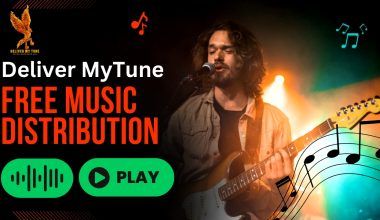Music streaming has dramatically changed the way we listen to music, providing instant access to millions of songs with just a few clicks. Platforms like Spotify, Apple Music, and YouTube Music have become the go-to sources for music lovers around the world. In this blog, we will explore how music streaming works, inner workings of music streaming services, from the technical processes involved to the impact they have on the music industry. We will also delve into the history of music streaming, its role in combating piracy, and the different types of streaming services available. Additionally, we will examine key trends shaping the industry and the quest for long-term profitability.
The Evolution of Music Streaming
The Early Days and Rise of Music Streaming
The journey of music streaming began in the late 1990s and early 2000s with the advent of the internet and digital music files. Early platforms like Napster and Kazaa popularized the idea of sharing music online, albeit through illegal means. The music industry faced a significant challenge as piracy became rampant, leading to a decline in physical album sales.
The introduction of legal streaming services such as Rhapsody (now Napster) in 2001 marked the beginning of the legitimate streaming market. However, it was the launch of Spotify in 2008 that truly revolutionized the industry. Spotify’s freemium model, which offered both free ad-supported and premium subscription options, made it a global leader in music streaming.
Streaming as a Solution to Piracy
Music streaming emerged as a viable solution to combat piracy by providing a convenient and affordable way for users to access music legally. The availability of vast music libraries at a low cost or for free (with ads) made streaming an attractive alternative to illegal downloads. This shift helped reduce piracy rates and provided a new revenue stream for the music industry through licensing and royalty payments.
How Music Streaming Works
Content Acquisition and Licensing
Streaming platforms acquire music through licensing agreements with record labels, aggregators, and independent artists. These agreements define the terms of usage and royalties.
- Record Labels and Aggregators: Major record labels sign extensive deals with streaming services to ensure their catalogs are available. Aggregators facilitate the distribution of music from smaller labels and independent artists.
- Independent Artists: Many platforms allow artists to upload their music directly or via distribution services, broadening their reach.
Uploading and Encoding
Once the music is acquired, it is uploaded and encoded for streaming.
- Encoding: The audio files are compressed into formats like AAC or Ogg Vorbis to balance sound quality with data efficiency.
- Metadata: Essential information such as the artist name, album title, and track number is embedded in the files to help organize and retrieve music on the platform.
Storage and Distribution
Encoded music files are stored on servers across multiple data centers, ensuring accessibility and reliability.
- Content Delivery Networks (CDNs): CDNs cache music files on servers closer to users, reducing latency and improving streaming speed.
- Cloud Storage: Platforms often utilize cloud storage for scalability and efficient management of large volumes of data.
User Interface and Experience
The user interface of streaming platforms is designed for ease of use and personalized experience.
- Search and Discovery: Advanced algorithms help users find new music based on their listening habits. Features like playlists, recommendations, and radio stations enhance discovery.
- Playback: The playback engine streams music from the CDN to the user’s device, ensuring smooth listening with minimal buffering.
Licensing and Royalties
Managing licenses and paying royalties is crucial for streaming platforms.
- Licensing Agreements: These agreements specify the conditions under which music can be streamed, including geographical restrictions and payout rates.
- Royalties: Payments to rights holders are typically calculated based on a pro-rata share of total streams, distributing revenue proportionally to the number of streams each song receives.
Monetization
Streaming platforms generate revenue primarily through subscriptions and advertisements.
- Subscription Models: Platforms offer various subscription tiers, including free ad-supported and premium ad-free options with additional features.
- Advertisements: For non-subscribers, platforms monetize through ads played between songs or displayed within the app.
The Journey of a Song on a Music Streaming Platform
Creation and Recording
The process begins with the artist creating and recording the song in a studio.
Distribution to Platforms
The completed song is then sent to a music distributor or uploaded directly by the artist.
- Metadata Submission: Alongside the audio file, metadata is submitted to ensure the song is correctly categorized and searchable.
- Encoding and Storage: The platform encodes and stores the song on its servers, ready for streaming.
Availability on the Platform
Once processed, the song becomes available on the platform for streaming. It can be searched, added to playlists, and featured in recommendations.
User Interaction
Users can discover the song through several channels:
- Search: Directly searching for the song or artist.
- Playlists: Curated playlists by the platform or other users.
- Recommendations: Suggestions based on the user’s listening history.
Streaming and Playback
When a user selects the song, the platform streams it from the nearest CDN server to the user’s device.
- Buffering: A small portion of the song is buffered to ensure continuous playback.
- Adaptive Streaming: The quality of the stream adapts to the user’s network conditions, maintaining a seamless experience.
Analytics and Feedback
Platforms collect data on user interactions to improve services and recommendations.
- Listening Data: Information on how often and when songs are played.
- User Feedback: Likes, skips, and other interactions help refine recommendations.
Royalties Distribution
Royalties are calculated and distributed to rights holders based on the number of streams. And, this is how music streaming works.
- Monthly Reports: Platforms provide detailed reports to rights holders, showing the number of streams and corresponding earnings.
- Payments: Royalties are paid out periodically, usually monthly.
Classification of Music Streaming Services
Music streaming services can be categorized into several types based on their focus, market reach, and business models.
Pioneer Brands: Spotify’s Leadership
Spotify is often considered the pioneer of modern music streaming. Launched in 2008, it introduced the freemium model, combining free ad-supported access with premium subscriptions. Spotify’s advanced algorithms for personalized playlists and recommendations set it apart, making it a favorite among users.
Ecosystem Brands: Integration with Larger Tech
Ecosystem brands are streaming services integrated into larger tech ecosystems. Examples include Apple Music and Amazon Music, which are part of the broader ecosystems of Apple and Amazon, respectively. These services leverage their parent companies’ hardware and software integration to offer seamless user experiences.
Local Brands: Catering to Regional Tastes
Local brands focus on specific regions or countries, catering to local music tastes and preferences. Examples include JioSaavn and Gaana in India, QQ Music in China, and Anghami in the Middle East. These platforms often feature extensive catalogs of regional music and are tailored to local cultural contexts.
Niche Brands: Targeting Specific Genres or Audiences
Niche brands target specific genres or audience segments. For instance, Tidal focuses on high-fidelity audio and exclusive releases from major artists. SoundCloud caters to independent and emerging artists, providing a platform for sharing and discovering new music outside mainstream channels.
Semi-Music Streaming Services: Beyond Music
Semi-music streaming services include platforms that offer music alongside other types of content. YouTube, for example, provides a vast library of music videos and audio tracks but is primarily a video-sharing platform. Similarly, Facebook and Instagram feature music integration for videos and stories but are social media platforms at their core.
Trends Shaping the Music Streaming Industry
The music streaming industry is constantly evolving, influenced by technological advancements and changing consumer preferences. Here are five key trends shaping the industry:
Market Maturation and Increased Competition
As the market matures, competition among streaming services intensifies. Companies are focusing on differentiating their offerings through exclusive content, superior sound quality, and unique user experiences. The maturation of the market also leads to consolidation, with larger players acquiring smaller ones to expand their user base and market share.
Balancing Cost and Accessibility
The cost of music streaming is a critical issue for both consumers and artists. While streaming offers affordable access to music for users, it raises concerns about fair compensation for artists. Streaming platforms are continually adjusting their pricing models and royalty structures to balance affordability with fair pay for content creators.
Global Expansion of Streaming Services
Music streaming is expanding globally, reaching new markets and audiences. Emerging markets in Asia, Africa, and Latin America represent significant growth opportunities. Streaming services are localizing their offerings, incorporating regional music and languages to cater to diverse audiences.
Integration with Smart Speakers and Voice-Controlled Devices
The rise of smart speakers and voice-controlled devices like Amazon Echo, Google Home, and Apple’s HomePod is transforming how people interact with music streaming services. Voice commands make it easier to play music, discover new tracks, and control playback, enhancing the overall user experience.
Diversification Beyond Music: From Music to Audio
Streaming services are expanding beyond music to include other forms of audio content like podcasts, audiobooks, and live radio. Platforms like Spotify and Apple Music are investing in original podcast content and exclusive audio shows, aiming to become comprehensive audio entertainment providers.
Long-term Profitability for Streaming Services
Despite their popularity, many streaming services are still striving for long-term profitability. The cost of licensing music and paying royalties is substantial, and competition keeps subscription prices relatively low. To achieve sustainable profitability, streaming platforms are exploring new revenue streams, such as exclusive content deals, advertising innovations, and partnerships with other tech companies.
Conclusion
Understanding how music streaming works reveals a complex yet fascinating process that benefits both artists and listeners. By providing a convenient and cost-effective way to access music, streaming platforms have become an integral part of the music industry. As technology continues to advance, the future of music streaming holds exciting possibilities for innovation and growth. The industry’s focus on addressing piracy, diversifying offerings, and expanding globally will shape the next phase of its evolution.
For further reading, explore these related articles:
- What is YouTube Content ID?
- Deliver My Tune’s Exciting New Services!
- Know the Ways to Get the Music Sync Licensing
- What is Performance Royalty?
For additional resources on music marketing and distribution, visit Deliver My Tune.






